The recorded lows around me, generally within a degree of agreeing with my outside thermometer, reached 31 to 32 degrees.
My recorded low temperature in the garden was 39.6 degrees, more than warm enough for what's currently in.
I successfully maintained a temperature differential of around 8 degrees.
I'll be doing the same thing again tonight as the same low temperatures apply.
Wednesday, April 28, 2010
The Veil Worked
Monday, April 26, 2010
A Veil of Frost Protection
I started planting annuals late last week when the weather forecast showed we were clear of frost well into May. Naturally, we have a projected low of 35° and we're under a frost warning and freeze watch.
There are a few ways to protect gardens from an unexpected frost.
The most common is to cover the plants, which is not realistic in my case--there are too many, and in areas that are too large. With all the burlap I have on-hand, I might be able to cover 1/3 of the garden that's at risk. Additionally, it must be promptly removed in the morning or the plants may end up baking under the covering.
In my case, I ran the watering systems on the grass for twenty minutes and the garden for the same. Raising the humidity to nearly 100% at 45 degrees makes temperature drops difficult. The dew point is higher, so as temperatures try to drop the water has to condense out of the air, releasing a large amount of heat and helping to protect the plants. Additionally, the condensed water settles on the plants and soil at the temperature at which it condensed, helping to stop further drops in temperature.
The veil of frost protection woven by applying water is delicate and can be overcome if temperatures fall under 32°, but most unseasonable frosts can be overcome this way.
Wednesday, April 14, 2010
This Year's Prices
Cracked corn cost me $6.38 for 50 pounds this year, or down 6.5% from last year. Soy was $10.52 for 50 pounds, or down 4.1%.
Since last year's prices were fairly normal, I profess myself very pleased!
Sunday, April 11, 2010
P. Annua Repair
Gary requested that I post the complete series of P. annua repair shots in my lawn for reference. My results were not typical; this involved never letting the deep soil go completely dry, and feeding this area at three times my already heavy rate for 2008.
Looking back at my notes, I watered an average of every 3 to 5 days depending on the weather, and applied 450 pounds per thousand equivalent across the entire damaged area to speed repair. I used a mix of Milorganite, soybean meal, and one light dose of alfalfa in early August. I recorded the weather that summer as fairly hot and dry, so spreading was a bit slower than it would be during a more normal year.
[caption id="" align="alignnone" width="640" caption="May 7, 2008, just post dying"]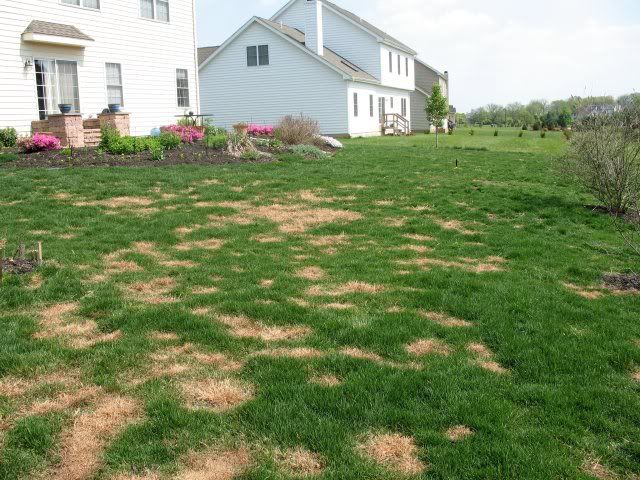 [/caption]
[/caption]
[caption id="" align="alignnone" width="640" caption="June 15, 2008, about 5 weeks"]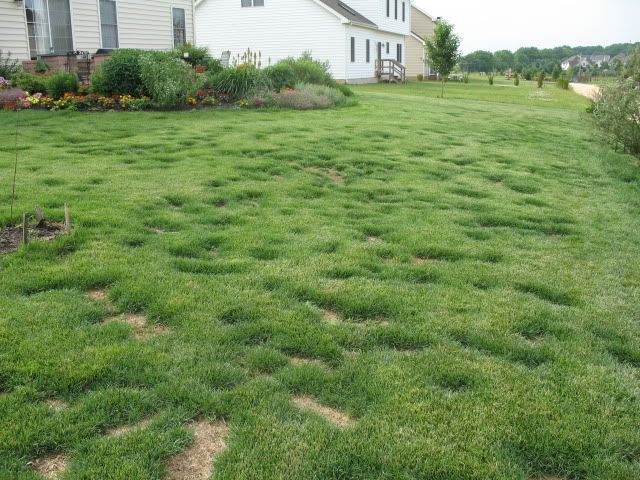 [/caption]
[/caption]
[caption id="" align="alignnone" width="640" caption="July 5, 2008, about 8 weeks"]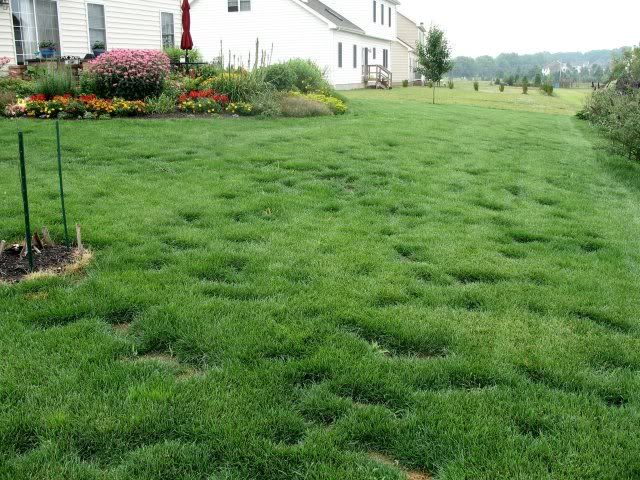 [/caption]
[/caption]
[caption id="" align="alignnone" width="640" caption="August 12, 2008, about 13 weeks"]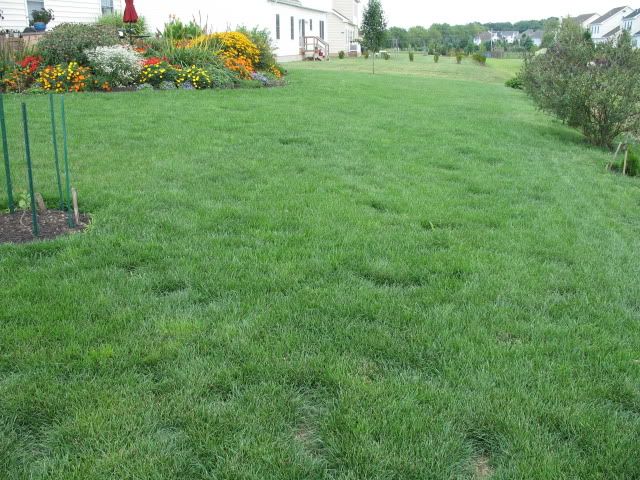 [/caption]
[/caption]
[caption id="" align="alignnone" width="640" caption="September 4, 2008, about 16 weeks--plus a robot"]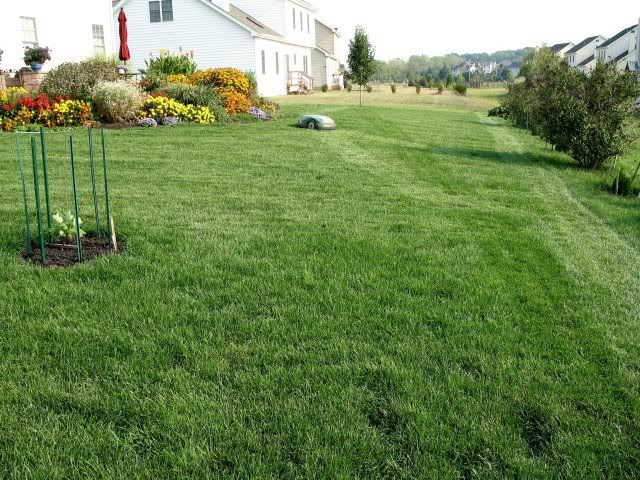 [/caption]
[/caption]
Thursday, April 8, 2010
More April Photos!
This one time I'm posting thumbnails; I don't often post four photos at once. Click on any image to embiggen!
With the weather accelerating right past April and into July, I now have the flowering Cleveland pear trees, hyacinths, tulips, chionodoxa (early white and mid season blue), and just about everything else all blooming at once. And regrettably, not lasting long and not looking very good when it blooms. April blossoms simply can't handle the heat.
Here's a photo of the lawn from this afternoon. It's fully awake, but seems to be wanting a little more iron:
This is the blooming Cleveland pear. The blossoms opened Monday, and it looks like the tree will finish up tomorrow or Friday: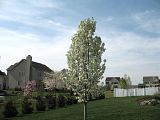
This parrot tulip isn't supposed to bloom until mid-May: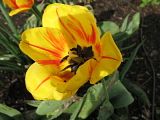
This is an Angelique tulip. They're mid-May bloomers, and generally don't have the slightly brownish color on the flower rib. It's blasting a bit in the heat:
Wednesday, April 7, 2010
Garden Feeding
I'm trying to transform the garden soil to the same standard (or better) than the lawn soil. So I fed again with another 72 pounds of Milorganite, or 36 pounds per thousand, plus added 16 pounds of starter fertilizer to raise the phosphorus level in the soil. The lawn is stabilized at 20 PPM, the gardens should be identical as they received the same treatment. 40 to 60 PPM would be better for gardens where I ask for a great deal of blooming all season long.
So far, that's a grand total of 117 pounds of Milorganite per thousand this year. Although extremely high (and it will be struck with 50 pounds of soybean meal Friday), I'm trying to add as much organic food as possible before I mulch next week.
Friday, April 2, 2010
More Photos!
The lawn is developing quickly this year, although that should be no surprise when temperatures are over 75°. I've included a few bonus photos as well--jonquils, and a purple hyacinth that started to open this morning. Click on any image to embiggen it.
I fed the roses and Thuja with a few handfuls of alfalfa, but I won't bother with the lawn this year. Growth is already excellent and I had to cut it yesterday.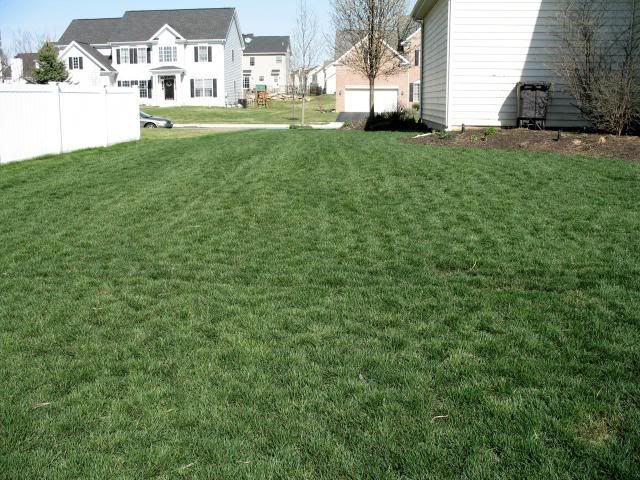
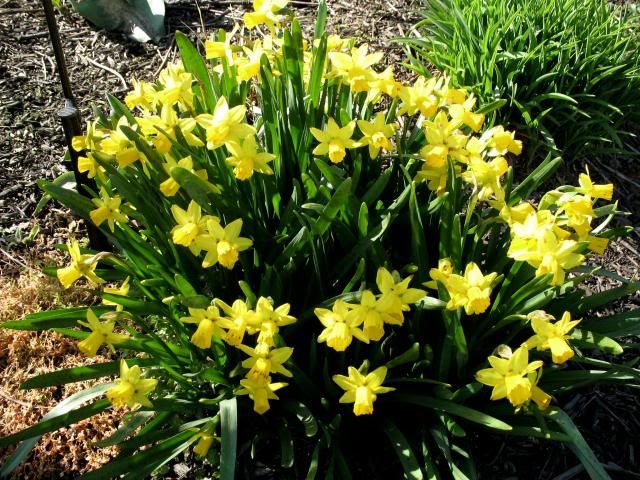

Thursday, April 1, 2010
Feeding the Lawn
Another 108 pounds of Milorganite went down today over the entire 7,000 square feet (for 15.4 pounds per thousand).
This year I'm trying to enhance the gardens as well, so I dropped 36 pounds per thousand through them.
Please note, if you're feeding with synthetics, it's far too early in Pennsylvania to even think about it--wait until mid May for better results.